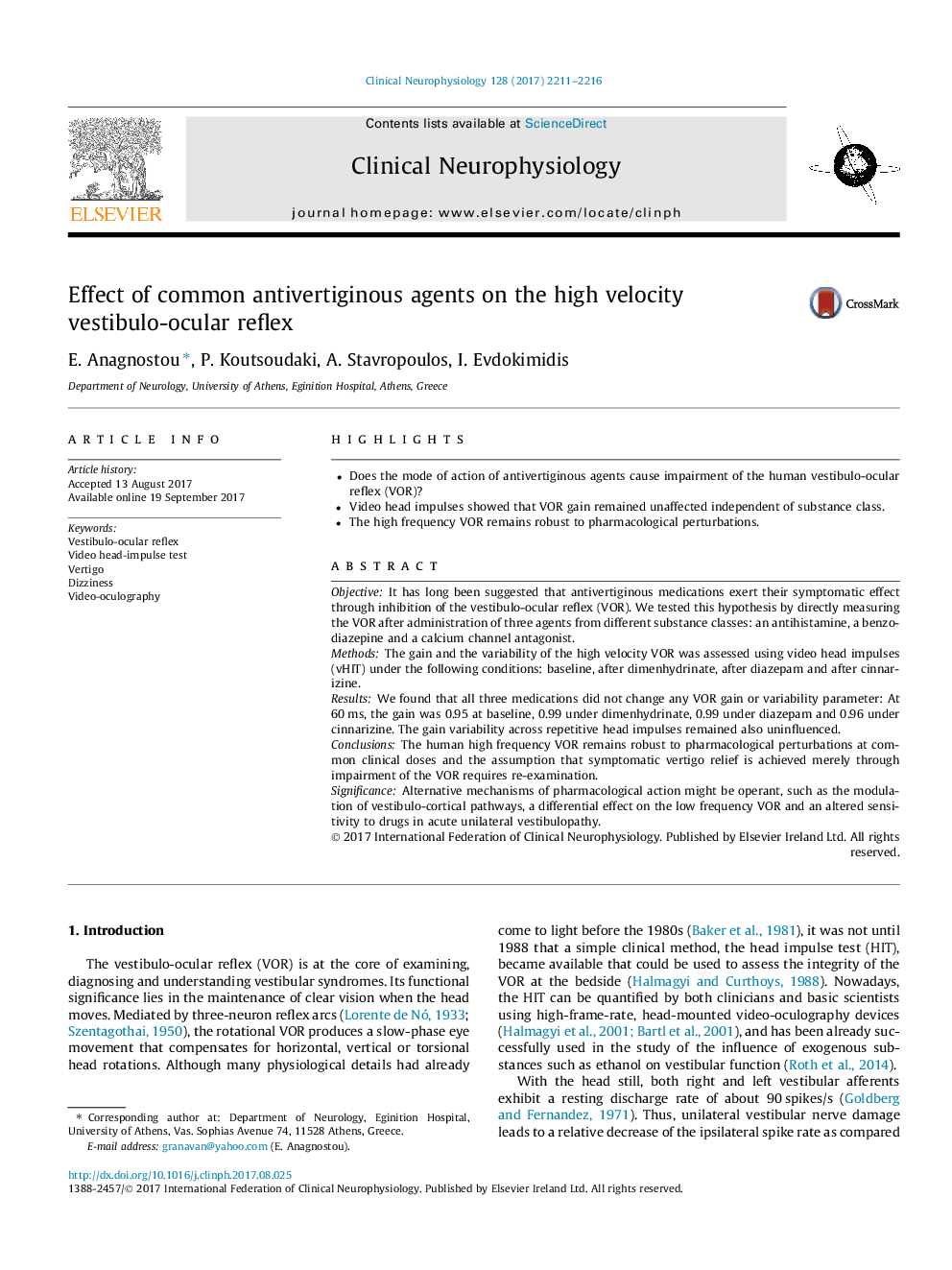| Article ID | Journal | Published Year | Pages | File Type |
|---|---|---|---|---|
| 5627591 | Clinical Neurophysiology | 2017 | 6 Pages |
â¢Does the mode of action of antivertiginous agents cause impairment of the human vestibulo-ocular reflex (VOR)?â¢Video head impulses showed that VOR gain remained unaffected independent of substance class.â¢The high frequency VOR remains robust to pharmacological perturbations.
ObjectiveIt has long been suggested that antivertiginous medications exert their symptomatic effect through inhibition of the vestibulo-ocular reflex (VOR). We tested this hypothesis by directly measuring the VOR after administration of three agents from different substance classes: an antihistamine, a benzodiazepine and a calcium channel antagonist.MethodsThe gain and the variability of the high velocity VOR was assessed using video head impulses (vHIT) under the following conditions: baseline, after dimenhydrinate, after diazepam and after cinnarizine.ResultsWe found that all three medications did not change any VOR gain or variability parameter: At 60Â ms, the gain was 0.95 at baseline, 0.99 under dimenhydrinate, 0.99 under diazepam and 0.96 under cinnarizine. The gain variability across repetitive head impulses remained also uninfluenced.ConclusionsThe human high frequency VOR remains robust to pharmacological perturbations at common clinical doses and the assumption that symptomatic vertigo relief is achieved merely through impairment of the VOR requires re-examination.SignificanceAlternative mechanisms of pharmacological action might be operant, such as the modulation of vestibulo-cortical pathways, a differential effect on the low frequency VOR and an altered sensitivity to drugs in acute unilateral vestibulopathy.
